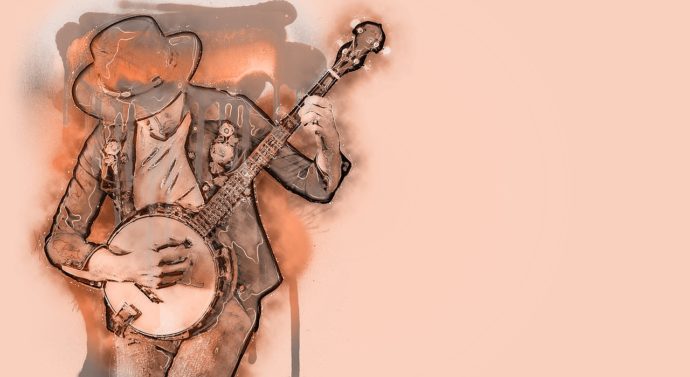
Mac’s Tracks: The evolution of American folk music
Editorial March 22, 2019, Comments Off 269The following is an edition of Mac’s Tracks, The Mirror’s music column. All views, thoughts and opinions belong solely to the author and do not necessarily represent those of the Drury Mirror.
One of my best friends is from Sikeston, Mo. For those who are unfamiliar with the name, that’s the town in the Bootheel that gets by on being the home of Lambert’s Cafe. Apart from being the funniest person I associate with, he fits the bill for the typical southern Missourian – complete with accent and straw hat. He’s awfully fond of his hometown despite its problems and is always happy to recount the tale of walking 10 miles to a gas station and another 10 back to his empty-tank car. He also listens almost exclusively to old-timey American folk music.
Among my favorite quotes from him is “if you go back far enough, country just turns into folk. If you go back too far, it’s British.” Ignoring the discrepancy of “British” vs. “English” that drives history buffs up the wall, it’s a shockingly valid statement.
Roots of American folk music
American folk finds its roots in the Revolution with tunes like “Yankee Doodle,” and even earlier in hymns sung in churches and fields like “Swing Low Sweet Chariot.” Further back than that are the songs passed down along English lines as people migrated to the New World in search of land and riches.
Appalachian folk of the 1700s and 1800s inspires bluegrass and country today. Its ballad style and pull from the many different cultures of the United States, as well as the nation’s European past. It molded traditional Irish music with passed-down English lyrics that were “softened” to fit Puritan standards of modesty.
As with all American things, there is no singular definition as to what makes it uniquely folk besides the fact that the music came from and was passed down by the people. Many different groups – those first generations of immigrants from Europe, the enslaved Caribbean and West African people and the true Native Americans – all contributed to the tumultuous and plentiful genres that are generalized as folk music.
Defining folk music
Woody Guthrie and Bob Dylan brought a glimpse of folk into the mainstream, but the majority of this genre doesn’t reach airwaves. Folk is the anthem of the people, detailing their experiences and lives in ways that commercial music can’t replicate. From these tunes we learn about histories that are minute in the grander scheme of things but meant all the world to the people singing.
The songs are about struggle and overcoming hardship, too – it’s not coincidence that the work songs and hymns of the slaves are some of the most definitive examples of folk. The labor movement of the early 1900s breathed new life into the music as it fought for fair wages and safe working conditions. It redefined itself again with the civil rights movement of the 1960s as activists found common ground and unity through song.
The popular country jams of today are a far cry from American folk in terms of content, but stylistically hold true to an emphasis on the vocals and story the song wants to convey. Stringed instruments like the guitar, fiddle and banjo are ever-present and provide that signature twang that we all hold a special place in our hearts for.
This week’s Mac’s Tracks playlist dives into the expansive world of folk music and provides the best way to experience folk – listening and singing along. Listen on Spotify.
Written by Maclen Johnson.